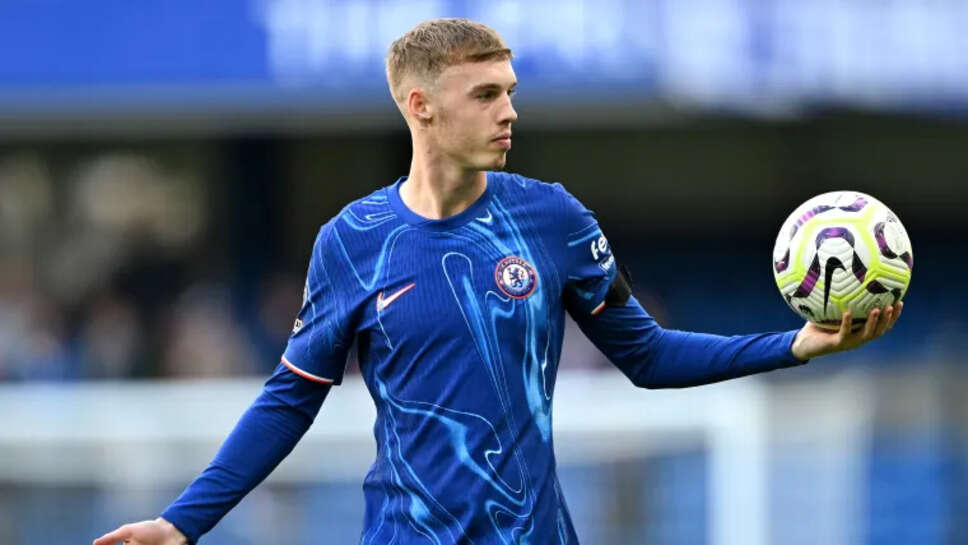Blueprint to Victory: Chelsea Blend PSG’s Press with Their Own Vertical Flair

In a tightly contested Club World Cup final that was as much a battle of tactics as it was of talent, Chelsea emerged victorious by playing a game that looked eerily familiar—but with a distinct twist. Drawing from Paris Saint-Germain’s high press and midfield traps, Chelsea executed a blueprint rooted in suffocation and disruption. But what separated them from PSG’s often sterile dominance was the addition of directness—a vertical punch delivered through incisive long balls and quick transitions.
By the end of 90 minutes, Chelsea had not only neutralized the Champions League winners but beaten them at their own game.
A High Press with Purpose
Chelsea’s pressing in this final was not just aggressive—it was intelligent, patterned, and relentless. Inspired by the pressure-heavy style used effectively by PSG in recent European fixtures, Chelsea’s forwards and midfielders worked in unison to isolate the opposition’s ball-playing defenders.
Every time a pass was made to the wide center-backs or full-backs, a Chelsea forward was already pressing from one side while a midfielder cut off the inside passing lane. The effect? The Champions League winners were often forced into hurried clearances or risky central passes—many of which Chelsea intercepted.
But unlike PSG’s press, which often ends with a recycle back into slow possession, Chelsea looked to capitalize instantly.
The Long Ball Twist
This was Chelsea’s key variation: once the ball was won, there was no time wasted. Long diagonals, vertical switches, and first-time passes over the top were unleashed with precision. Players like Enzo Fernández and Conor Gallagher turned midfield steals into long-distance artillery, seeking the clever runs of Nicolas Jackson, Raheem Sterling, and Cole Palmer.
Where PSG often continue to suffocate teams with possession, Chelsea were happy to stretch the field. This change in rhythm—press hard, then go long—kept the opponents constantly on the back foot.
It wasn’t possession for possession’s sake. It was pressure followed by vertical threat. Every ball forward had an intention: break the backline, pull the centre-backs wide, or force the goalkeeper into a rushed clearance.
Cole Palmer: The Silent Conductor
While Chelsea’s game looked frantic from the outside, it was anchored by the calm intelligence of Cole Palmer. Playing in a hybrid role between wide attacker and false 9, Palmer’s positioning was crucial to Chelsea’s press and counter game.
He drifted inside to form a midfield overload when the ball was central but peeled wide to receive long diagonals when Chelsea broke forward. His first touches, often into space, allowed for quick combinations that pulled defenders out of position.
It was Palmer who often received the long balls from deep and held them long enough for runners to catch up. In one such instance, he chested down a 50-yard switch, cut inside, and assisted Sterling with a delicate through ball—highlighting his technical composure in high-pressure moments.
Enzo and Caicedo: Dual Engines of Control
Chelsea’s midfield duo of Enzo Fernández and Moisés Caicedo were the lungs and spine of the team. They covered ground endlessly, with Enzo tasked with launching attacks from deep and Caicedo cleaning up transitions.
Unlike PSG’s midfield, which often plays in horizontal triangles, Chelsea’s operated more vertically. Caicedo would press higher when Chelsea lost the ball, acting as the first shield, while Enzo sat deeper to pick up second balls and launch the next wave.
Their coordination meant that the Champions League winners had no time to settle. Attempts to slow the tempo were met with fast counters or aerial balls played into space.
Tactical Flexibility
Chelsea manager Mauricio Pochettino—ironically once PSG’s boss—clearly learned from his former side but tailored the tactics to better suit Chelsea’s squad profile. PSG often over-relies on individual brilliance in the final third; Chelsea’s approach was more democratic.
By switching between a 4-2-3-1 and a fluid 3-4-3 in and out of possession, Chelsea were able to plug spaces effectively while always offering an outlet on the flanks. When pressed, their defenders were allowed to go long without hesitation, knowing the forwards were positioned to compete or win second balls.
Even their wing-backs were part of the scheme. Reece James and Levi Colwill acted as deep outlets and crossing options. Both frequently launched diagonal passes or carried the ball aggressively when the opposition’s press collapsed.
Defensive Solidity and Compactness
Despite their offensive sharpness, Chelsea remained compact and disciplined at the back. Thiago Silva’s positioning, combined with the recovery pace of Axel Disasi and Colwill, ensured that the high defensive line didn’t turn suicidal.
Unlike PSG, who sometimes gamble with too many players forward during a press, Chelsea’s rest defense was solid. Even when a pass bypassed their midfield press, Enzo and Caicedo would track back with purpose, often forcing opponents wide or backward.
The result was a defense that felt always in control, never desperate.
A Psychological Edge
Beyond tactics, Chelsea’s approach gave them a psychological advantage. The Champions League winners were clearly unsettled by the relentlessness of Chelsea’s press. Their usual rhythm—marked by patient buildup—was frequently interrupted, and their most technical players were denied space to breathe.
Chelsea smelled blood. Every interception led to a forward burst. Every aerial win was followed by an immediate switch. In doing so, they disrupted the flow and implanted doubt into their opponents' minds.
By the second half, even the champions looked unsure—second-guessing passes, retreating when they’d usually progress, and committing errors under duress.
Final Flourish
Chelsea’s goal(s) came not from set plays or speculative shots, but from the very blueprint they crafted: press, recover, go vertical. One goal came after a turnover high up the pitch; another came from a deep ball by Enzo that skipped the entire midfield and landed in front of Jackson, who calmly slotted home.
It was direct, efficient football—not route one, but route smart.
A New Identity in the Making
Chelsea’s Club World Cup final win was more than just another trophy—it was a declaration of tactical maturity. By borrowing the intensity of PSG’s pressing model and marrying it with their own brand of vertical aggression, the Blues have discovered a winning identity.
This wasn’t possession for show. It was pressure for purpose. Every movement was calculated. Every pass forward was pre-planned. And when it mattered, Chelsea proved that they could not only match the best tactically—but outsmart them.
Pochettino’s men may have taken inspiration from Paris, but they added a London edge: more grit, more pace, more intent.
And with this performance, Chelsea may have just rewritten the playbook on how to beat champions—by becoming the disruptors who dare to evolve.
